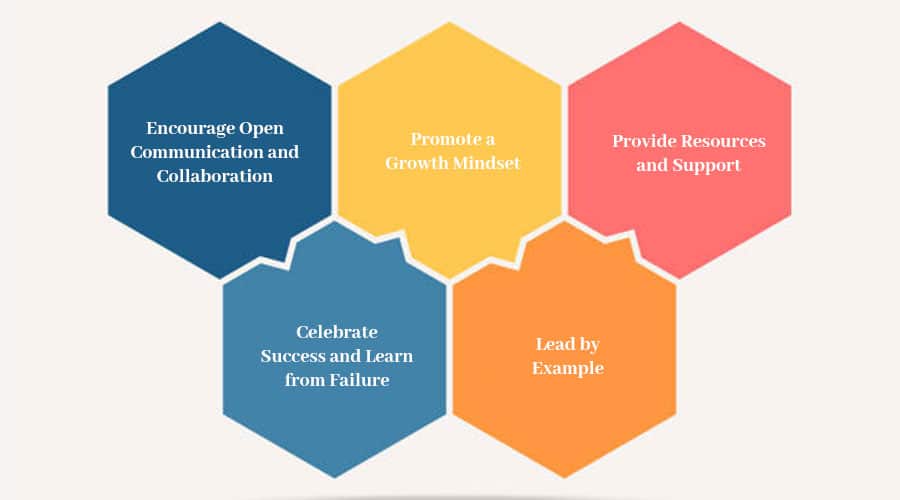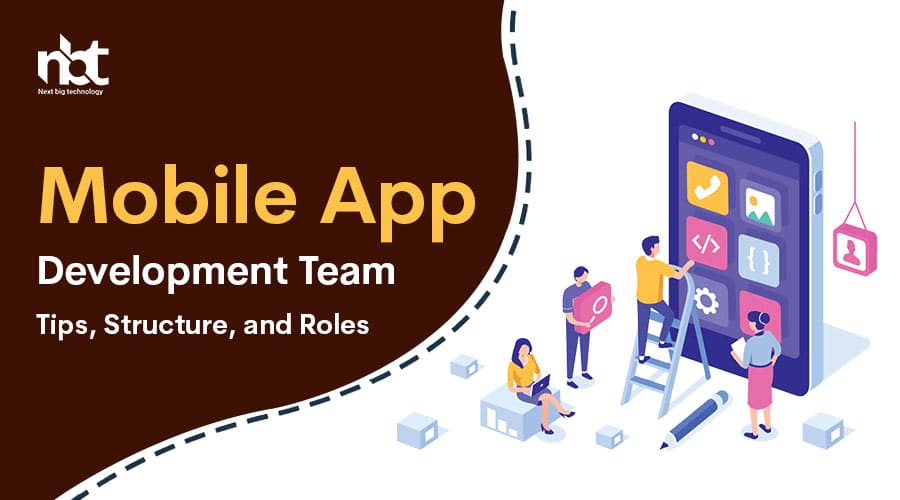Table of Contents
Building a Strong Foundation: Defining Your Mobile App Development Team
In today’s digital age, mobile applications have become the cornerstone of modern businesses. Whether it’s enhancing customer engagement, streamlining operations, or driving revenue, the success of a mobile app largely hinges on the strength of the team behind its development. Building a formidable foundation for your mobile app development team is paramount to achieving your project goals and ensuring long-term success.
Understanding Your Needs
Before assembling your dream team, it’s crucial to have a clear understanding of your project requirements and objectives. Consider the nature of your app, its target audience, desired features, and the platforms you intend to support. This foundational knowledge will serve as a compass in guiding your team-building efforts and ensuring alignment with your project goals.
The Essential Players
- Project Manager: Acting as the captain of the ship, the project manager oversees the entire development process, from conceptualization to deployment. They are responsible for project planning, resource allocation, timeline management, and stakeholder communication. A skilled project manager can keep the team focused, mitigate risks, and ensure that the project stays on track.
- Developers: The backbone of any development team, developers bring your app to life through coding and programming. Depending on your project requirements, you may need front-end developers, back-end developers, and specialists in various programming languages such as Swift, Kotlin, Java, or React Native. Look for individuals with a proven track record, strong problem-solving skills, and a passion for innovation.
- Designers: User experience (UX) and user interface (UI) designers play a pivotal role in shaping the look and feel of your app. They are responsible for creating intuitive interfaces, seamless navigation, and visually appealing designs that resonate with your target audience. A collaborative mindset, creativity, and a keen eye for detail are essential traits to look for in designers.
- Quality Assurance (QA) Specialists: Ensuring that your app meets the highest standards of performance, usability, and reliability falls under the purview of QA specialists. They conduct rigorous testing across various devices, platforms, and scenarios to identify and rectify any bugs or issues. Attention to detail, analytical thinking, and a methodical approach are indispensable qualities in QA professionals.
- Product Owner/Stakeholder: This individual represents the voice of the customer and serves as the bridge between the development team and the stakeholders. They articulate the vision for the app, prioritize features based on business value, and provide valuable feedback throughout the development cycle. Effective communication skills, domain knowledge, and a customer-centric mindset are key attributes of a successful product owner.
Cultivating Collaboration and Communication: Building a cohesive and collaborative team is not just about assembling a group of talented individuals; it’s about fostering a culture of trust, transparency, and open communication. Encourage regular team meetings, brainstorming sessions, and feedback loops to ensure that everyone is aligned with the project vision and objectives. Embrace agile methodologies such as Scrum or Kanban to promote iterative development and continuous improvement.
Embracing Diversity and Inclusion: Diversity in your mobile app development team brings a wealth of perspectives, ideas, and experiences to the table. Embrace diversity in terms of gender, ethnicity, background, and expertise to foster creativity, innovation, and resilience. Create an inclusive environment where every team member feels valued, respected, and empowered to contribute their unique skills and insights.
Understanding Roles and Responsibilities in Mobile App Development

In today’s fast-paced digital world, mobile applications have become an integral part of our daily lives. From ordering food to managing finances, there seems to be an app for everything. Behind every successful mobile app, there’s a dedicated team working tirelessly to ensure its development, deployment, and maintenance. Understanding the roles and responsibilities within this team is crucial for the seamless execution of a mobile app project.
1. Project Manager: At the helm of the mobile app development project is the project manager. They are responsible for overseeing the entire development process, from inception to delivery. Their duties include setting project goals, creating timelines, allocating resources, and ensuring that the project stays within budget and meets quality standards. Additionally, they act as a bridge between the client and the development team, ensuring clear communication and alignment of objectives.
2. Product Owner: The product owner represents the client or stakeholder’s interests throughout the development process. They are responsible for defining the features and functionalities of the app based on user requirements and market analysis. The product owner prioritizes tasks, provides feedback to the development team, and ensures that the final product aligns with the client’s vision and goals.
3. UX/UI Designer: User experience (UX) and user interface (UI) designers are tasked with creating an intuitive and visually appealing interface for the mobile app. They conduct user research, create wireframes and prototypes, and design the layout, navigation, and visual elements of the app. The goal is to enhance user satisfaction by making the app easy to use and visually engaging.
4. Mobile App Developer: Mobile app developers are the backbone of the development team, responsible for turning design concepts into functional code. They have expertise in programming languages such as Java (for Android) or Swift (for iOS) and use development frameworks like React Native or Flutter. Developers work closely with designers and testers to ensure that the app meets technical specifications and performance requirements.
5. Quality Assurance (QA) Tester: QA testers play a critical role in ensuring the quality and reliability of the mobile app. They are responsible for identifying bugs, glitches, and usability issues through rigorous testing procedures. QA testers conduct various tests, including functional testing, compatibility testing, and usability testing, to ensure that the app functions flawlessly across different devices and platforms.
6. Deployment and Maintenance Team: Once the app is developed and tested, it needs to be deployed to app stores and maintained regularly. This responsibility falls on the deployment and maintenance team, which handles tasks such as app submission, version updates, bug fixes, and performance optimization. They also monitor user feedback and analytics to identify areas for improvement and enhance the overall user experience.
Team Structure: Key Components for Success
In the dynamic landscape of modern business, the concept of teamwork stands as a cornerstone for success. Whether it’s a startup striving to make its mark or a well-established corporation aiming to stay ahead of the curve, the effectiveness of a team heavily relies on its structure. Crafting a well-balanced and efficient team structure is not merely about assembling individuals; it’s about orchestrating a symphony where each component harmonizes to achieve a common goal. Let’s delve into the essential elements that form the blueprint for a successful team structure.
- Clear Goals and Objectives: Every successful team begins its journey with a crystal-clear understanding of its goals and objectives. These serve as guiding stars, illuminating the path towards achievement. When each team member comprehends the overarching mission and their specific role in accomplishing it, synergy is fostered, and productivity soars.
- Defined Roles and Responsibilities: Clarity in roles and responsibilities is the bedrock of an effective team structure. Each member should know precisely what is expected of them, ensuring accountability and minimizing confusion. By delineating roles based on individual strengths and expertise, teams can capitalize on diversity and harness the full potential of their members.
- Open Communication Channels: Communication serves as the lifeblood of any successful team. Establishing open channels for dialogue fosters transparency, facilitates the exchange of ideas, and mitigates misunderstandings. Whether it’s through regular meetings, digital platforms, or informal conversations, effective communication cultivates a culture of collaboration and empowers team members to voice their opinions and concerns.
- Supportive Leadership: Leadership plays a pivotal role in shaping team dynamics and driving success. A supportive leader fosters an environment of trust, empowers team members, and provides guidance when needed. By fostering a culture of mentorship and continuous learning, leaders can nurture talent, foster innovation, and propel the team towards excellence.
- Flexibility and Adaptability: In today’s fast-paced business environment, adaptability is paramount. A successful team structure is characterized by its ability to pivot swiftly in response to changing circumstances. By embracing flexibility and encouraging creative problem-solving, teams can navigate challenges effectively and seize opportunities for growth.
- Diverse Skill Sets and Perspectives: Diversity is not only a matter of representation but also a catalyst for innovation and resilience. A well-rounded team comprises individuals with diverse skill sets, backgrounds, and perspectives. By embracing diversity and fostering an inclusive environment, teams can leverage a rich tapestry of ideas and experiences to tackle complex problems and drive meaningful change.
- Constructive Feedback Mechanisms: Feedback serves as a cornerstone for continuous improvement. A successful team structure incorporates mechanisms for providing and receiving constructive feedback. By offering praise for achievements and constructive criticism for areas of improvement, teams can foster a culture of growth and development, enabling each member to reach their full potential.
- Shared Values and Culture: Shared values and a strong organizational culture serve as the glue that binds a team together. When team members align around common values such as integrity, respect, and collaboration, they become united in purpose and resilient in the face of adversity. By nurturing a positive and inclusive culture, teams can cultivate a sense of belonging and loyalty, driving engagement and performance.
Selecting the Right Skill Sets: Essential Members of Your Team

In today’s fast-paced and dynamic business landscape, assembling the right team with the appropriate skill sets is paramount to achieving success. Whether you’re a startup, a small business, or a large corporation, selecting the right members for your team can make all the difference in reaching your goals and staying ahead of the competition. Here’s a comprehensive guide to the essential skill sets you should look for when building your dream team.
- Leadership and Visionary Skills: Every successful team needs a leader who can set a clear vision, inspire others, and steer the team toward its objectives. A leader with strong communication, decision-making, and strategic planning abilities can motivate team members and keep them focused on the big picture.
- Technical Proficiency: Depending on your industry, having team members with technical expertise is crucial. Whether it’s software development, engineering, data analysis, or graphic design, individuals with specialized technical skills can drive innovation and problem-solving within your team.
- Creativity and Innovation: In today’s competitive market, innovation is key to staying relevant and ahead of the curve. Look for team members who are creative thinkers, able to generate fresh ideas, and think outside the box. These individuals can bring new perspectives to the table and drive continuous improvement within your team.
- Adaptability and Resilience: The business landscape is constantly evolving, and unforeseen challenges are inevitable. That’s why it’s essential to have team members who are adaptable and resilient in the face of change. Individuals who can quickly pivot, learn new skills, and bounce back from setbacks are invaluable assets to any team.
- Collaboration and Teamwork: Success is rarely achieved in isolation; it requires effective collaboration and teamwork. Look for team members who are adept at working collaboratively, communicating effectively, and building strong relationships with colleagues. A cohesive team that can leverage each other’s strengths is more likely to achieve success together.
- Problem-Solving and Critical Thinking: Every business encounters obstacles and challenges along the way. That’s why it’s essential to have team members who excel in problem-solving and critical thinking. Individuals who can analyze complex situations, identify solutions, and make informed decisions are indispensable members of any team.
- Emotional Intelligence: In addition to technical skills, emotional intelligence (EQ) is increasingly recognized as a crucial attribute for success in the workplace. Team members with high EQ are empathetic, self-aware, and skilled in managing interpersonal relationships. They can navigate conflicts, provide support to colleagues, and foster a positive work environment.
- Project Management Skills: Effective project management is essential for delivering results on time and within budget. Look for team members who are organized, detail-oriented, and proficient in project management tools and methodologies. These individuals can effectively plan, execute, and monitor projects, ensuring smooth operations and successful outcomes.
- Customer Focus: Ultimately, the success of any business depends on its ability to meet the needs and expectations of its customers. That’s why it’s crucial to have team members who are customer-focused and committed to delivering exceptional experiences. Whether it’s sales, marketing, or customer support, individuals who prioritize customer satisfaction can drive loyalty and growth.
- Continuous Learning and Growth Mindset: The business landscape is constantly evolving, and successful teams embrace a culture of continuous learning and growth. Look for team members who are curious, eager to learn, and open to new challenges. These individuals can adapt to change, acquire new skills, and stay ahead of the curve in an ever-changing environment.
Project Management Strategies for Mobile App Development Teams
In today’s digital age, where mobile apps dominate the market, efficient project management is paramount for the success of any development team. With the rapidly evolving landscape of technology, staying ahead requires more than just technical expertise; it requires a well-structured approach to project management. Here, we delve into some effective strategies tailored specifically for mobile app development teams to ensure smooth sailing from inception to launch.
- Clear Goal Definition: Before embarking on any project, it’s crucial to define clear and achievable goals. Mobile app development teams should collaborate with stakeholders to establish the project’s objectives, target audience, and expected outcomes. Clarity at this stage sets the foundation for the entire project and aligns all team members towards a common vision.
- Agile Methodology: Agile methodology has become the cornerstone of software development, including mobile apps. Embracing Agile principles allows teams to adapt to changing requirements, prioritize tasks efficiently, and deliver incremental value to users. By breaking down the project into smaller iterations, teams can quickly respond to feedback and make necessary adjustments, ensuring a more dynamic and responsive development process.
- Effective Communication Channels: Communication is the backbone of any successful project. Mobile app development teams must establish clear communication channels to foster collaboration and transparency among team members. Utilizing project management tools such as Slack, Microsoft Teams, or Asana can streamline communication, facilitate file sharing, and keep everyone informed about project updates in real-time.
- Utilization of Project Management Software: Implementing robust project management software tailored for mobile app development can significantly enhance team productivity and efficiency. Tools like Jira, Trello, or Basecamp offer features such as task tracking, milestone management, and progress reporting, enabling teams to stay organized and focused throughout the project lifecycle.
- Continuous Testing and Quality Assurance: Quality is non-negotiable in mobile app development. Implementing a rigorous testing and quality assurance process ensures that the app meets user expectations and functions seamlessly across various devices and platforms. Automated testing tools like Appium or XCTest can help streamline the testing process, identifying bugs and performance issues early on, thus minimizing rework and ensuring a smoother deployment.
- Regular Progress Reviews: Regular progress reviews are essential to track project milestones, identify potential roadblocks, and make necessary course corrections. Conducting weekly or bi-weekly sprint reviews allows teams to evaluate progress, discuss challenges, and re-prioritize tasks if needed. These reviews promote accountability and empower team members to take ownership of their responsibilities, fostering a culture of continuous improvement.
- Flexibility and Adaptability: Flexibility is key in the fast-paced world of mobile app development. Teams must be prepared to adapt to changing market trends, technological advancements, and stakeholder requirements. Embracing a flexible mindset encourages innovation, fosters creativity, and enables teams to stay one step ahead of the competition.
Effective Communication: Fostering Collaboration Among Team Members

In today’s fast-paced business environment, effective communication stands as the cornerstone of success for any team. It’s not merely about exchanging information but fostering collaboration, building trust, and achieving common goals. When team members communicate efficiently, they share ideas, resolve conflicts, and boost productivity. Let’s delve into some strategies to enhance communication and promote collaboration among team members.
Understanding the Importance of Effective Communication: Effective communication goes beyond conveying messages; it involves active listening, empathy, and clarity. When team members communicate effectively, they understand each other’s perspectives, which reduces misunderstandings and conflicts. Moreover, clear communication establishes transparency within the team, fostering a positive work environment.
Cultivating Active Listening: Active listening is a fundamental aspect of effective communication. Encouraging team members to listen attentively to each other fosters mutual understanding and respect. It involves giving full attention to the speaker, acknowledging their points, and providing constructive feedback. By practicing active listening, team members feel valued and understood, thus strengthening the team dynamics.
Embracing Transparency: Transparency is crucial for building trust among team members. When leaders and team members are transparent about goals, challenges, and decisions, it cultivates a culture of honesty and openness. Regular updates, progress reports, and sharing relevant information ensure that everyone is on the same page, promoting collaboration and alignment towards common objectives.
Leveraging Technology for Communication: In today’s digital era, technology plays a pivotal role in facilitating communication among team members, especially in remote or distributed teams. Utilizing communication tools such as project management software, instant messaging platforms, and video conferencing enables seamless interaction regardless of geographical barriers. However, it’s essential to choose tools that suit the team’s needs and preferences to enhance efficiency and collaboration.
Establishing Clear Channels for Feedback: Feedback is essential for personal and professional growth. Creating a culture where feedback is encouraged and valued fosters continuous improvement within the team. Constructive feedback should be specific, timely, and actionable, focusing on behaviors or actions rather than individuals. By providing and receiving feedback gracefully, team members learn from each other’s experiences and enhance their performance collectively.
Encouraging Open Dialogue: Open dialogue encourages team members to express their thoughts, ideas, and concerns freely. Leaders should create a safe space where everyone feels comfortable sharing their opinions without fear of judgment. Regular team meetings, brainstorming sessions, and collaborative discussions promote creativity, innovation, and problem-solving. Embracing diversity of thought leads to well-rounded decisions and fosters a culture of inclusivity within the team.
Agile Methodologies: Implementing Flexibility and Adaptability
In the ever-evolving landscape of project management, agility has emerged as a beacon of efficiency and effectiveness. Agile methodologies offer a dynamic approach to project execution, emphasizing flexibility, collaboration, and adaptability. From software development to marketing campaigns, businesses across industries are increasingly turning to agile frameworks to navigate the complexities of modern project management.
Understanding Agile Methodologies: At its core, agile methodology is a mindset—a way of thinking that prioritizes iterative development, frequent feedback loops, and the ability to respond to change swiftly. Unlike traditional waterfall approaches, where requirements are fixed at the outset, agile methodologies embrace uncertainty and welcome change throughout the project lifecycle.
The Principles of Agile Manifesto: The Agile Manifesto, penned by a group of software developers in 2001, outlines the foundational principles of agile methodologies. These principles emphasize individuals and interactions over processes and tools, working software over comprehensive documentation, customer collaboration over contract negotiation, and responding to change over following a plan.
Implementing Flexibility with Scrum: Scrum, one of the most popular agile frameworks, provides a structured yet flexible approach to project management. In Scrum, projects are divided into short iterations called sprints, typically lasting two to four weeks. During each sprint, cross-functional teams collaborate to deliver a potentially shippable product increment. Daily stand-up meetings, sprint planning sessions, and sprint reviews facilitate communication and ensure alignment with project goals.
Embracing Adaptability through Kanban: Kanban, another agile framework originating from lean manufacturing principles, focuses on visualizing workflow and limiting work in progress. Kanban boards, divided into columns representing different stages of the workflow, enable teams to visualize their tasks and identify bottlenecks quickly. By establishing clear policies and implementing pull-based systems, Kanban promotes continuous improvement and adaptability in response to changing priorities.
Cultivating Collaboration and Feedback: Central to agile methodologies is the emphasis on collaboration and feedback. By involving stakeholders early and often, teams can ensure that the delivered product meets customer needs and expectations. Regular retrospectives allow teams to reflect on their processes, identify areas for improvement, and make adjustments accordingly. Through open communication channels and a culture of transparency, agile teams foster trust and synergy, driving project success.
Overcoming Challenges and Harnessing Benefits: While agile methodologies offer numerous benefits, including increased flexibility, faster time to market, and higher customer satisfaction, implementing them successfully can pose challenges. Resistance to change, lack of executive support, and inadequate training are common hurdles that organizations may encounter. However, by investing in education, fostering a supportive environment, and gradually transitioning to agile practices, teams can overcome these obstacles and reap the rewards of agility.
User Experience (UX) Design: Crafting Intuitive Interfaces

In the digital realm, where attention spans are short and competition is fierce, the success of any product hinges on its ability to deliver a seamless and intuitive user experience (UX). With users expecting nothing less than perfection, UX design has emerged as a critical aspect of product development, dictating whether a digital offering will sink or swim in the vast ocean of the internet.
What exactly is UX design? In essence, it’s the process of enhancing user satisfaction by improving the usability, accessibility, and pleasure provided in the interaction between the user and the product. At the heart of UX design lies the creation of intuitive interfaces – interfaces that feel so natural and effortless to use that they fade into the background, allowing users to focus on achieving their goals without unnecessary distractions or frustrations.
Crafting intuitive interfaces is both an art and a science, requiring a deep understanding of user behavior, psychology, and design principles. Here are some key strategies to help you master the art of UX design and create interfaces that delight users from the moment they land on your product:
- Know Your Users: The foundation of any successful UX design is a thorough understanding of your target audience. Conduct user research to gain insights into their needs, preferences, and pain points. By empathizing with your users and putting yourself in their shoes, you can tailor your interface to meet their specific requirements.
- Simplicity is Key: When it comes to UX design, less is often more. Strive for simplicity in your interface design, eliminating clutter and unnecessary elements that can overwhelm or confuse users. Focus on prioritizing the most important features and content, and present them in a clear and concise manner.
- Create Clear Hierarchies: Users should be able to intuitively navigate your interface without having to think too hard. Establish clear visual hierarchies to guide users’ attention and help them understand the relationships between different elements on the screen. Use techniques such as size, color, and positioning to emphasize important elements and de-emphasize less critical ones.
- Consistency is Key: Consistency breeds familiarity, which in turn enhances usability. Maintain consistency across your interface in terms of layout, navigation, typography, and visual style. By adhering to established design patterns and conventions, you can help users feel more comfortable and confident as they interact with your product.
- Feedback and Affordances: Provide users with clear feedback and affordances to indicate how they should interact with your interface. Use visual cues such as hover effects, animations, and microinteractions to communicate the outcome of user actions and guide them through the interface. Feedback helps users understand the consequences of their actions and reduces the likelihood of errors or confusion.
- Iterate and Test: UX design is an iterative process, and continuous improvement is key to creating exceptional interfaces. Test your designs with real users early and often to identify any usability issues or pain points. Incorporate feedback into your design iterations, refining and optimizing your interface until it achieves the desired level of intuitiveness and user satisfaction.
Team Dynamics: Nurturing a Culture of Innovation and Creativity

In today’s dynamic and competitive business landscape, fostering a culture of innovation and creativity within teams is not just advantageous but essential for long-term success. Teams that can adapt, think creatively, and innovate are better equipped to navigate challenges, seize opportunities, and stay ahead of the curve. Let’s delve into how organizations can nurture such a culture within their teams.
Encourage Open Communication and Collaboration: Effective communication is the cornerstone of a creative and innovative team dynamic. Encourage team members to share their ideas openly, without fear of criticism or judgment. Foster a collaborative environment where diverse perspectives are valued and respected. By fostering open communication channels, teams can harness the collective intelligence and creativity of their members.
Promote a Growth Mindset: A growth mindset is crucial for fostering innovation and creativity within teams. Encourage team members to embrace challenges, persist in the face of setbacks, and see failures as opportunities for growth and learning. By promoting a culture of continuous learning and development, teams can cultivate the resilience and creativity needed to tackle complex problems and drive innovation.
Provide Resources and Support: Provide teams with the resources, tools, and support they need to innovate and experiment. This could include access to training programs, workshops, innovation labs, and funding for new initiatives. Empower teams to take ownership of their projects and explore new ideas without fear of failure. By providing the necessary resources and support, organizations can create an environment where innovation thrives.
Celebrate Success and Learn from Failure: Celebrate both successes and failures within the team. Recognize and reward innovative ideas and achievements, no matter how small. At the same time, view failures as valuable learning experiences and opportunities for growth. Encourage teams to reflect on their successes and failures, identify lessons learned, and apply them to future projects. By celebrating success and learning from failure, teams can continuously improve and innovate.
Lead by Example: Leadership plays a critical role in shaping team dynamics and fostering a culture of innovation and creativity. Lead by example by demonstrating a willingness to take risks, think outside the box, and embrace new ideas. Encourage experimentation and empower teams to challenge the status quo. By modeling innovative behavior, leaders can inspire and motivate their teams to do the same.
Top Mobile App Development Companies
In today’s digital age, mobile applications have become the cornerstone of our daily lives, seamlessly integrating into our routines and enhancing our experiences. With the ever-growing demand for innovative apps, the mobile app development industry continues to thrive, boasting a myriad of companies vying to make their mark. However, amidst this vast landscape, a select few emerge as trailblazers, consistently delivering exceptional solutions that redefine the mobile experience. Let’s delve into the realm of the top mobile app development companies of 2024, renowned for their ingenuity, expertise, and commitment to excellence.
-
-
Next Big Technology:

Focus Area
- Mobile App Development
- App Designing (UI/UX)
- Software Development
- Web Development
- AR & VR Development
- Big Data & BI
- Cloud Computing Services
- DevOps
- E-commerce Development
Industries Focus
- Art, Entertainment & Music
- Business Services
- Consumer Products
- Designing
- Education
- Financial & Payments
- Gaming
- Government
- Healthcare & Medical
- Hospitality
- Information Technology
- Legal & Compliance
- Manufacturing
- Media
-
- InnovateLabs: True to its name, InnovateLabs is synonymous with innovation and creativity in the realm of mobile app development. Armed with a passion for pushing boundaries and exploring new frontiers, this company consistently delivers groundbreaking solutions that captivate and inspire. With a focus on emerging technologies such as AI, AR, and IoT, InnovateLabs stays ahead of the curve, empowering businesses to stay competitive in an ever-evolving digital landscape.
- TechForge: With a legacy of excellence spanning decades, TechForge remains a stalwart in the mobile app development industry. Combining technical expertise with a deep understanding of market trends, they have a proven track record of delivering high-quality solutions that drive tangible results. Whether it’s enterprise-grade applications or consumer-facing interfaces, TechForge excels in delivering tailored solutions that exceed expectations.
- CodeCrafters: As masters of their craft, CodeCrafters epitomizes the art of mobile app development. With a focus on clean code, elegant design, and seamless functionality, they transform concepts into reality with unparalleled precision. From startups to Fortune 500 companies, CodeCrafters has earned a reputation for reliability, integrity, and unwavering commitment to client satisfaction.
- DigitalNest: Nestled at the intersection of creativity and technology, DigitalNest is a powerhouse in mobile app development, renowned for its innovative approach and forward-thinking solutions. With a diverse portfolio spanning industries such as healthcare, finance, and e-commerce, they have the expertise to tackle any challenge with finesse and flair. DigitalNest prides itself on fostering collaboration, transparency, and a culture of continuous learning, ensuring that each project is a testament to excellence.
FAQs On Mobile App Development
In today’s digital age, mobile applications have become an integral part of our lives, catering to various needs ranging from communication to entertainment, productivity, and beyond. With the increasing demand for mobile apps, many individuals and businesses are delving into mobile app development. However, venturing into this realm often brings forth a plethora of questions. To address these queries and provide clarity, let’s delve into some frequently asked questions (FAQs) on mobile app development:
1. What is Mobile App Development? Mobile app development refers to the process of creating software applications specifically designed to run on mobile devices such as smartphones and tablets. It involves various stages including conceptualization, design, development, testing, and deployment.
2. What are the Different Types of Mobile Apps? Mobile apps can be broadly categorized into three types:
- Native Apps: Developed for a specific platform (iOS, Android, etc.) using platform-specific programming languages.
- Web Apps: Accessed through a mobile browser and built using web technologies like HTML5, CSS, and JavaScript.
- Hybrid Apps: Combine elements of both native and web apps, leveraging web technologies within a native framework.
3. How Long Does it Take to Develop a Mobile App? The time required for mobile app development varies depending on factors such as complexity, features, platform, and resources available. Simple apps may take a few weeks to develop, while more complex ones can take several months or even longer.
4. What Skills are Required for Mobile App Development? Mobile app development requires a combination of technical skills such as programming languages (e.g., Java, Kotlin for Android; Swift, Objective-C for iOS), proficiency in app development frameworks, UI/UX design skills, and knowledge of database management.
5. How Much Does it Cost to Develop a Mobile App? The cost of developing a mobile app can vary significantly based on factors such as complexity, features, platform, development approach (in-house vs. outsourcing), and geographical location of the development team. Simple apps may cost a few thousand dollars, while complex ones can incur costs ranging from tens of thousands to several hundred thousand dollars.
6. What is the Importance of UI/UX Design in Mobile App Development? UI/UX design plays a crucial role in mobile app development as it directly impacts user engagement and satisfaction. A well-designed user interface (UI) enhances usability and ensures a seamless user experience (UX), leading to higher retention rates and increased user adoption.
7. How Do I Monetize My Mobile App? There are several monetization strategies for mobile apps including in-app purchases, subscription models, advertising, sponsorships, and selling merchandise or premium features. The choice of monetization strategy depends on factors such as the app’s target audience, niche, and business model.
8. What is the App Store Submission Process? For iOS apps, the submission process involves creating a developer account, preparing the app for submission, testing on physical devices, and submitting it to the App Store for review. For Android apps, developers need to create a developer account on Google Play, prepare the app for release, and submit it for review.
9. How Do I Market My Mobile App? Effective marketing is essential for the success of a mobile app. Strategies may include app store optimization (ASO), social media marketing, influencer partnerships, content marketing, email marketing, and paid advertising campaigns.
10. How Can I Ensure the Security of My Mobile App? Security is paramount in mobile app development to protect user data and prevent unauthorized access. Developers should implement secure coding practices, use encryption techniques, conduct regular security audits, and stay updated on security best practices and vulnerabilities.
Thanks for reading our post “Mobile App Development Team Tips, Structure and Roles”. Please connect with us to learn more about Best Mobile App Development.

















